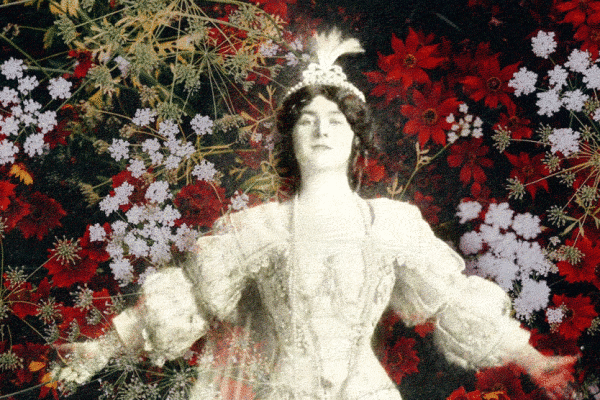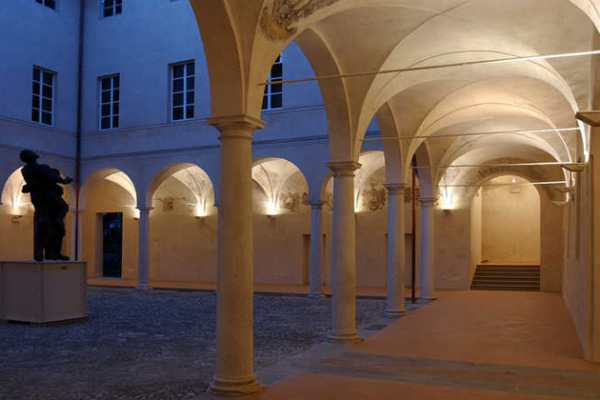Italian creative designer Cristian Grossi goes from fashion to children’s drawings with ease. In the middle, there are also illustrations that seem made inks and embroidered or crocheted to perfection. Cristian, 33 year old italian artist, as illustrator and designer is exhibiting his works in a solo show at Palazzo Cusani palace in Parma – in the context of the exhibition Visual arts Artists of the city show. Read the full Interview of Cristian Grossi.
Cristian, how does your relationship with fashion and creativity grew up?
I’m a rational person and at times even mentally rigid. But creativity has always been part of me. Even as a child I remember that I tried to find original solutions to the problems, tipping my point of view and always remembering not to take myself too seriously.
I know very little things about fashion, as you understand looking how I dress.
But fortunately I happen to draw so much, and later try to understand (with the help of fashion designers) if what I develope find a practical application of a fabric, a scarf or a t-shirt.
Fashion is marketing, but can also be art. How?
Before I believed that fashion was designed to create for you the anxiety of being out. I no longer think. Drawing illustrations for fabrics, I realized that behind in this area there are people who think so to sell a product, but also to keep a little poetry, who knows maybe in a drawing move. There is a form of respect for the artistic work that I like. The tastes of people are refining is a form of protection of the textile haiku. I like it.
Your works are an expression of continued research and experimentation. From what do you drive / inspiration?
I never thought explicitly about something that inspired me. I think it’s inevitable to be inspired, but I know that if I did it on purpose I would become cumbersome because I tend to complicate things.
Maybe the secret is not to think and draw on my personal imagery, memories of when I was a child, for example. Or my idea of a musical nature. But it is important that the drawing is spontaneous, clean and free from thinking too conceptual.

Deepen the shows at the Cafe del Prato. What is this?
The exhibition is curated by Marco Turco. It ‘a show with fifteen illustrations that tells how the ink spreads on a white surface. The converged world of ink is a bit ‘like people: the fact that we are one thing, we merge and go back to part. The stories are woven together like in grandma’s lace, interwoven as embroidery.
But unlike the lace I like the idea of designs that do not begin and end. Are in flux.
There are dramatic stories of love, travel and even the epic saga of the creatures immersed in a puddle of plankton.
As you approach the illustration?
At lesson in high school, I drew a lot. Especially during the lesson of history, I think on the Etruscans: now I’m happy that they were so boring. I read manga, art books and bought i used to copy figures. Especially the female nudes to draw at the request on diary of my classmates.
Mouse or pencil?
Mouse and pencil. Or rather, pen and scanner. The pencil I never liked it because it lets you go back. The pen instead is sincere and if you trust she will not allow you to make mistakes. I strongly believe in digital. There is an entire people to distrust, but I think that man should speak the language of his time and use the means of his time, to express ideas of his time. And then there is always a form of tradition: I always start by hand drawing (ink, pencil, ink).
Inspiration or perseverance?
Spontaneity and dedication.
Immediacy or depth?
Spontaneity does not mean throwing sketches sketches of the project. But doing a great job of looking at the mountain. Then to get rid of the creative act, with relief.
What artists inspire you?
My tastes change constantly. Suggestive for me the stories of Ingeborg Bachman, the poems of Amelia Rosselli, Bjork’s songs, the performances of Marina Abramovic and the films of Wong Kar Wai. In the visual arts myth is Munari for the synthesis and brilliance. But they are also devoted to diverse Galileo Chini and Klimt, which have haunted me with a passion for decoration redundant. There is always a clash between minimalism and abundance in my kitschy things.
How, the child, the adult must remain in your communicating with pictures and drawings?
I never believed in the young child: after all the adult grows and learns from their mistakes. It ‘also true that adults do very silly things that children do not. They say things I do not think, you take it so seriously to invent terms such as disabled, people e-mail with the word “offer you my”. Here, superstructure, those are, are demolished.


